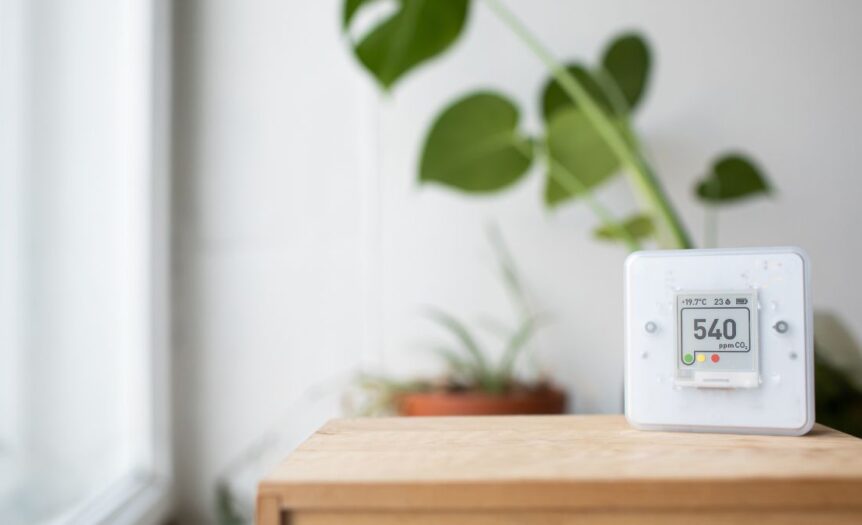Our homes are our fortresses; however, there are common household hazards that can pose a threat to the safety and health of our loved ones. Identifying these hazards and taking adequate measures to minimize the risk of potential injuries or illnesses is essential.
Let’s look into some of the common home health hazards and provide practical steps on what you can do to safeguard your family.
Indoor Air Pollution
Poor indoor air quality is often a concern, especially during winter when our windows and doors are mainly closed. To tackle this hazard, ensure that your home is well ventilated. You can open your windows daily for about 15 minutes to allow fresh air to circulate. Additionally, purchase a high-quality air purifier that can filter out pollutants and allergens from your home’s air. Regular cleaning and dusting of surfaces can also help reduce indoor air pollution.
Water Damage
Leaky pipes and roofs can damage water, posing a significant health hazard due to mold and mildew growth. It is essential to tackle any water damage issue as soon as it’s identified and engage professionals to deal with it. Ensure you keep your home dry and do not leave damp items around.
Fire Hazards
There are several fire hazards in our homes. Items such as candles, curtains, and electrical appliances pose a significant threat, creating a fire escape plan. Ensure that you have working smoke and carbon monoxide detectors, essential in a fire. Additionally, avoid leaving cooking appliances unattended and ensure that combustible materials are stored safely and away from heat sources.
Stairs and Fall Hazards
Cluttery or slippery stairs and floors can risk falls and serious injuries. Ensure you keep your stairs and floors free of obstacles and repair loose tiles or floorboards. Additionally, install handrails on your stairs to provide support, especially for the elderly and young children.
Poison Hazards
Most household cleaning products and chemicals can be dangerous if ingested or inhaled, especially by children. Therefore, it’s essential to ensure that they are adequately stored and that children cannot easily access them. Always follow instructions on the packaging and avoid mixing different chemicals, which can cause harmful reactions. Knowing how to determine your home’s water quality and testing it regularly can also help identify and tackle potential health hazards.
As homeowners, we are responsible for identifying and addressing any possible home health hazards. Taking these precautions ensures our homes are safe and healthy environments for ourselves and our loved ones. Remember always to stay vigilant and promptly address potential hazards to create a safe and secure home for everyone.










 Deering Estate
Deering Estate
 Massage Envy South Miami
Massage Envy South Miami
 Calla Blow Dry
Calla Blow Dry
 My Derma Clinic
My Derma Clinic
 Sushi Maki
Sushi Maki
 Sports Grill
Sports Grill
 The Healthy Kitchen
The Healthy Kitchen
 Golden Rule Seafood
Golden Rule Seafood
 Malanga Cuban Café
Malanga Cuban Café

 Kathleen Ballard
Kathleen Ballard
 Panter, Panter & Sampedro
Panter, Panter & Sampedro
 Vintage Liquors
Vintage Liquors
 The Dog from Ipanema
The Dog from Ipanema
 Rubinstein Family Chiropractic
Rubinstein Family Chiropractic
 Your Pet’s Best
Your Pet’s Best
 Indigo Republic
Indigo Republic




 ATR Luxury Homes
ATR Luxury Homes


 2112 Design Studio
2112 Design Studio
 Hamilton Fox & Company
Hamilton Fox & Company
 Creative Design Services
Creative Design Services
 Best Pest Professionals
Best Pest Professionals
 HD Tree Services
HD Tree Services
 Trinity Air Conditioning Company
Trinity Air Conditioning Company
 Cisca Construction & Development
Cisca Construction & Development
 Mosquito Joe
Mosquito Joe
 Cutler Bay Solar Solutions
Cutler Bay Solar Solutions


 Miami Royal Ballet & Dance
Miami Royal Ballet & Dance
 Christopher Columbus
Christopher Columbus
 Pineview Preschools
Pineview Preschools
 Westminster
Westminster
 Carrollton
Carrollton
 Lil’ Jungle
Lil’ Jungle
 Frost Science Museum
Frost Science Museum
 Palmer Trinity School
Palmer Trinity School
 South Florida Music
South Florida Music
 Pinecrest Orthodontics
Pinecrest Orthodontics
 Dr. Bob Pediatric Dentist
Dr. Bob Pediatric Dentist
 d.pediatrics
d.pediatrics
 South Miami Women’s Health
South Miami Women’s Health

 The Spot Barbershop
The Spot Barbershop
 My Derma Clinic
My Derma Clinic




 Miami Dance Project
Miami Dance Project

 Rubinstein Family Chiropractic
Rubinstein Family Chiropractic
 Indigo Republic
Indigo Republic

 Safes Universe
Safes Universe
 Vintage Liquors
Vintage Liquors
 Evenings Delight
Evenings Delight





 Atchana’s Homegrown Thai
Atchana’s Homegrown Thai
 Baptist Health South Florida
Baptist Health South Florida

 Laser Eye Center of Miami
Laser Eye Center of Miami
 Visiting Angels
Visiting Angels
 OpusCare of South Florida
OpusCare of South Florida

 Your Pet’s Best
Your Pet’s Best





 HD Tree Services
HD Tree Services
 Hamilton Fox & Company
Hamilton Fox & Company


 Creative Design Services
Creative Design Services